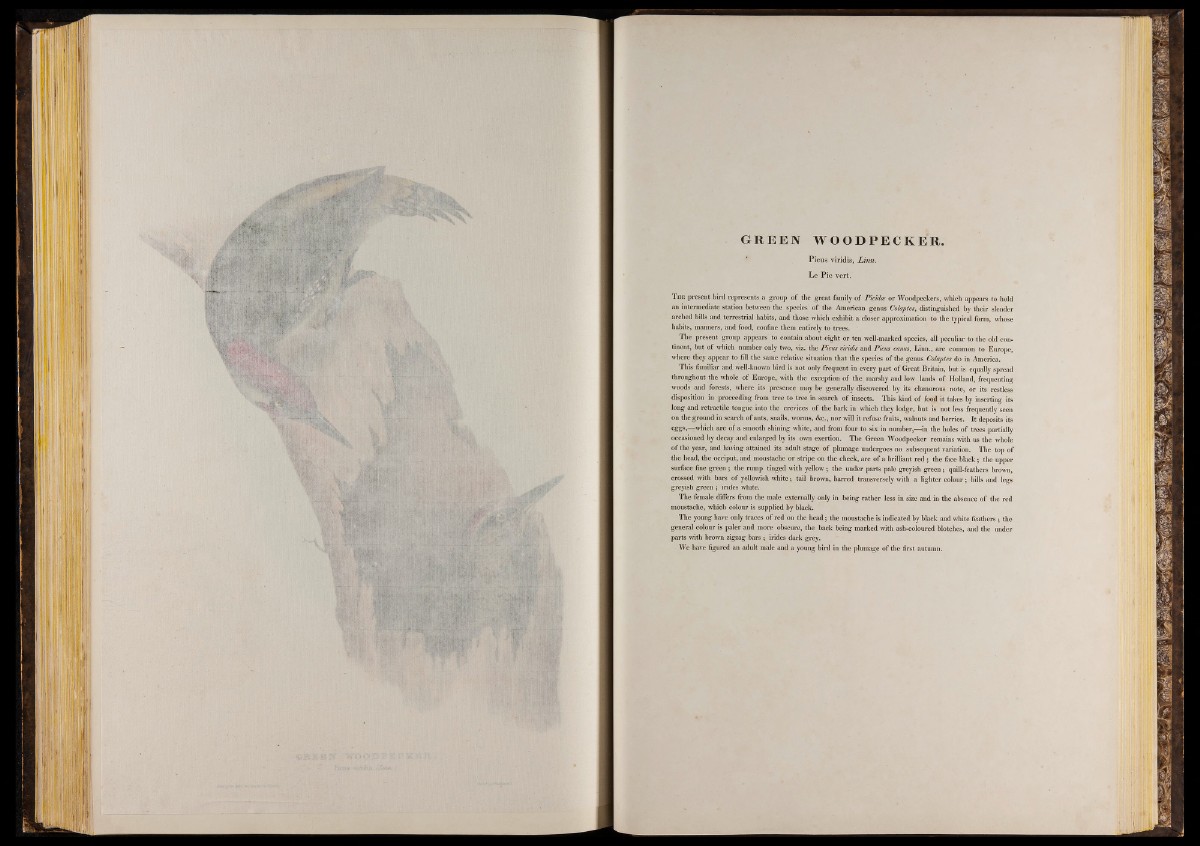
G R E E N WO O D P E C K E R .
Picus viridis, Linn.
Le Pic vert.
The present bird represents a group o f the great family of Picidte or Woodpeckers, which appears to hold
an intermediate station between the species of the American genus Colaptes, distinguished by their slender
arched bills and terrestrial habits, and those which exhibit a closer approximation to the typical form, whose
habits, manners, and food, confine them entirely to trees.
The present group appears to contain about eight or ten well-marked species, all peculiar to the old continent,
but of which number only two, viz. the Picus viridis and Picus canus, Linn., are common to Europe,
where tliey appear to fill the same relative situation that the species o f the genus Colaptes do in America.
This familiar and well-known bird is not only frequent in every part of Great Britain, but is equally spread
throughout the whole of Europe, with the exception o f the marshy and low lands of Holland, frequenting
woods and forests, where its presence may be generally discovered by its clamorous note, or its restless
disposition in proceeding from tree to tree in search o f insects. This kind of food it takes by inserting its
long and retractile tongue into the crevices of the bark in which they lodge, but is not less frequently seen
on the ground in search of ants, snails, worms, &c., nor will it refuse fruits, walnuts and berries. It deposits its
eggs,—which are of a smooth shining white, and from four to six in number,— in the holes of trees partially
occasioned by decay and enlarged by its own exertion. The Green Woodpecker remains with us the whole
o f the year, and having attained its adult stage o f plumage undergoes no subsequent variation. The top of
the head, the occiput, and moustache or stripe on the cheek, are o f a brilliant red ; the face black; the upper
surface fine green ; the rump tinged with yellow; the under parts pale greyish green; quill-feathers brown,
crossed with bars o f yellowish white; tail brown, barred transversely with a lighter colour; bills and legs
greyish green ; irides white.
The female differs from the male externally only in being rather less in size and in the absence of the red
moustache, which colour is supplied by black.
The young have only traces o f red on the head; the moustache is indicated by black and white feathers ; the
general colour is paler and more obscure, the back being marked with ash-coloured blotches, and the under
parts with brown zigzag bars ; irides dark grey.
We have figured an adult male and a young bird in the plumage of the first autumn.